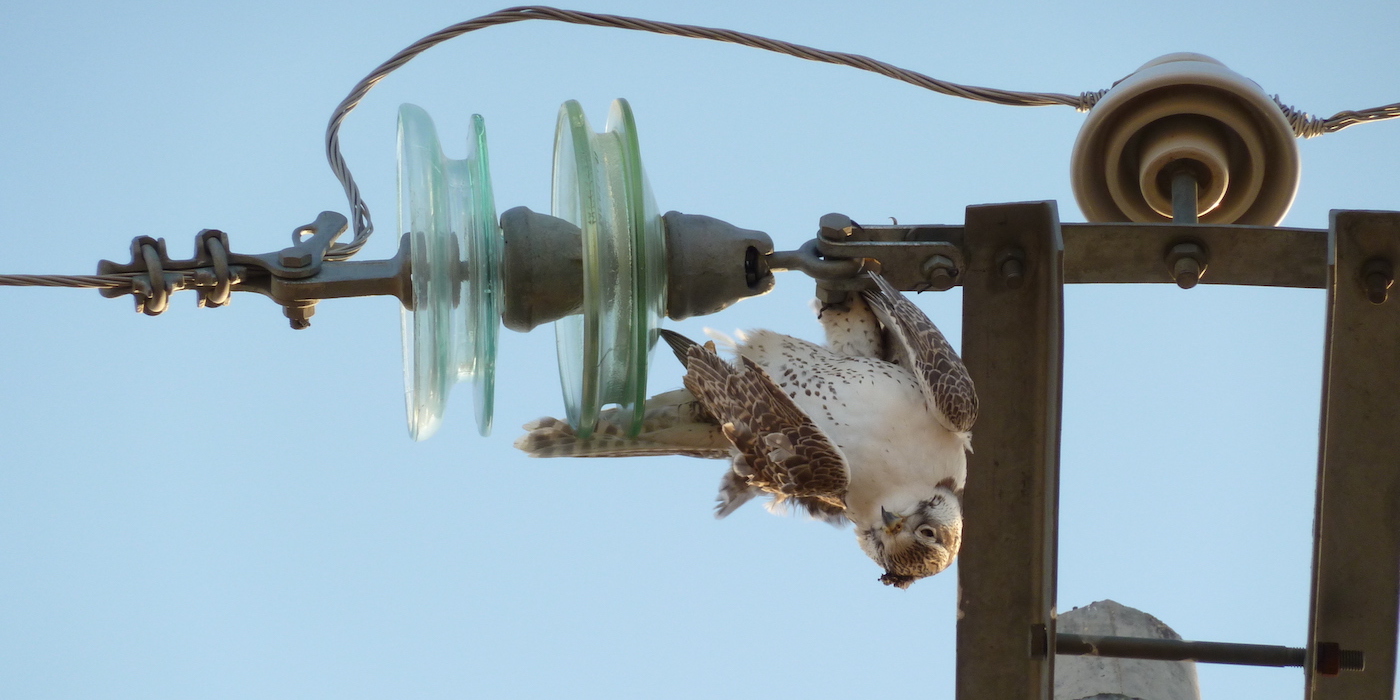Falconers can imagine little worse than the electrocution of their hunting bird. None-the-less, many of us have had the dreadful experience of going into the Field with a fit, alert hawk that is ready to hunt and returning with our falconry partner reduced to an inert bundle of feathers through contact with live electric wires. It is heart-breaking, and all the worse because it is completely preventable.
Of course, it is not only Falconry birds that are killed in this way. Every year thousands if not millions of birds, many of them raptors and many representing endangered species are killed, all over the world, because of poorly constructed electricity supply structures. It is quite probable that electrocutions are a very significant factor in the decline in Saker falcon population numbers. There is no doubt that the culprit structures can be built correctly or modified to avoid this senseless slaughter. There are a number of countries around the world where this problem is being addressed effectively. In South Africa where the Electricity supply utility (ESCOM) has formed a partnership with one of the largest conservation N.G.O.s in the country, the Endangered Wildlife Trust.
There is an enthusiasm to assist falconers and provide advice on mitigation in response to electrocution incidents. In IAF a Data Base of Electrocutions is managed, on our behalf, by a falconers of the South African Falconry Association. All falconers are encouraged to report the electrocution of any falconry birds as well as the electrocution of wild raptors.
The following process should be followed in the event of an electrocution event:
- Send an email to electrocution@iaf.org, ideally including a cell-phone photo of the structure.
- A representative of the Action Group will respond to obtain other information needed.
- Once the information has been processed and included in the data base, advice regarding mitigation of the structure will be sent to the falconer or organization who reported the incident.
- If the IAF Member organization reporting the incident wishes, a letter to the National Authorities can be prepared by the IAF reporting and requesting the implementation of mitigation.
- This process puts power to address electrocution incidents into the hands of falconers on the ground. In this way, IAF and its membership can address a problem facing falconry birds and assist with a significant international conservation issue.
Example of event report:Please find below details regarding an electrocuted Crowned Eagle
Date: 9th of November, 11am.
Location: Giba Gorge, Durban. KZN.
GPS location. -29.82465, 30.777The bird was found very fresh and still warm, pre-rigor mortis. A juvenile Crowned Eagle, approximately 12 months old (extensive body moult but no flight feathers yet moulted).
Scorch marks on the sole of the right foot and on the forehead were apparent.
Measurements were taken prior to freezing, and a tissue sample taken for DNA sexing.
The specimen is currently frozen and awaiting collection by the Durban Natural History Museum.
I arrived to collect the specimen at 1430, and went to the location to GPS and photograph. There was a large troop of monkeys foraging at the skip bins, where two of these distribution poles provided prime still-hunting perches.
The actual electrocution pole is #116518, at GPS -29.82465, 30.77, and the other very likely candidate for electrocution is pole #084283 at GPS -29.82495, 30.7767
For more information please visit: Birdelectrocution.org

